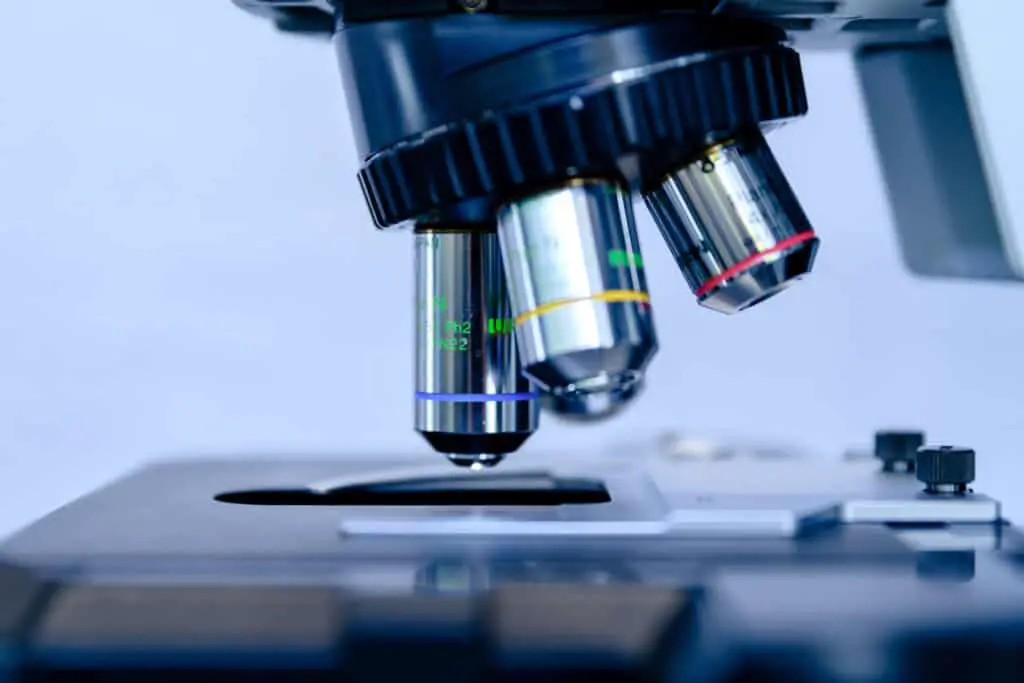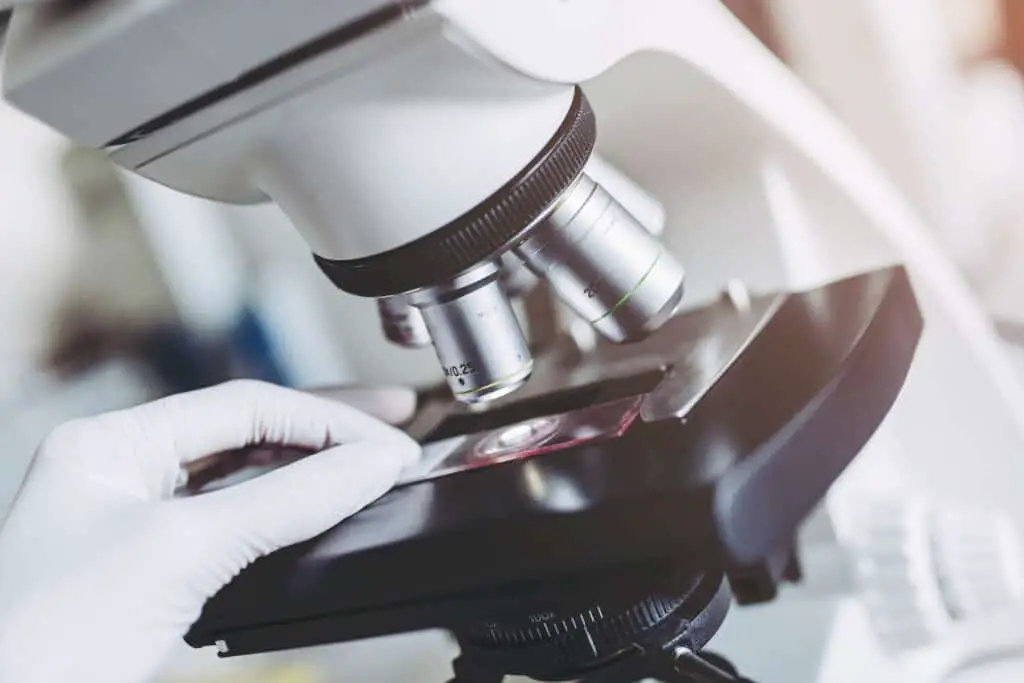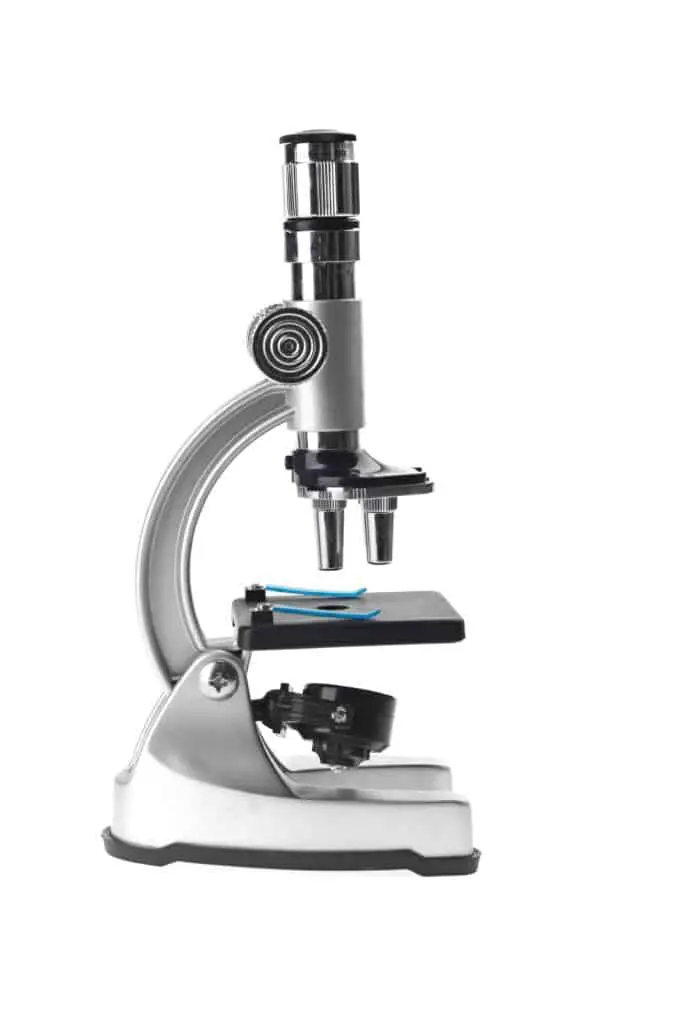Microscopes are used in many professions like the medical field, botany, technology fields, the rare earth and diamond trades and more. If you are a microscope hobbyist or enthusiast and want to continue working with microscopes in your day job you’re in luck because there are quite a few.
Some of the major jobs or careers that are known for their frequent use of the microscope are forensic scientists, jewelers, gemologists, botanists, and microbiologists. An example of a career emphasis that would predominantly use microscopes are researchers for science and public health.
| Job or Career | Average Salary |
|---|---|
| Quality Assurance | $30,000 |
| Lab Technician | $38,400 |
| Gemologist | $51,800 |
| High Tech Manufacturing Technician | $73,000 |
| Electronics Repair | $51,000 |
| Engineer (Failure Analysis) | $70,000 |
| Microelectronics Assembler | $40,000 |
| Engineer (Yield Enhancement) | $75,000 |
| Manufacturing Associate | $28,800 |
| Staff Research Associate | $53,400 |
| Conservation Technician | $28,800 |
| Manufacturing Assembler | $40,300 |
| Materials Properties Research Technician | $64,000 |
| Research and Development Associate | $50,000 |
| Forensic Science Technician | $69,000 |
| Jeweler | $49,000 |
| Botanist | $58,000 |
| Microbiologist | $60,000 |
Looking into how and why these fields use microscopes to accomplish their purpose is quite fascinating and gives valuable insight into the kinds of jobs and careers that are using microscopes. If you are proficient at using microscopes, you’re partly on your way to a variety of potential careers.
The Forensic Science Technician
One job that uses a microscope is a forensic science technician. A forensic science technician examines criminal investigations. Their job is to collect and analyze evidence from different crime scenes. They explore things linked to criminal activity.
These workers gather information, study the information they gathered and perform different scientific tests. Some things they have to examine are weapons, fingerprints, biological materials, substances, and bodily fluids. Using a microscope, they may look at hair fibers from a scene or a suspect. When they use a microscope, it is easy for them to tell if the hair fiber was from a human or an animal. They can isolate and compare samples.
Microscopes are great for collecting evidence and looking deeper into a crime scene. A microscope magnifies evidence with fantastic detail. Some of these things include checking bullets and determining when a gun was used and what gun it was. It can be used for checking hair fibers and looking at particulates. It can also trace evidence, fragments, fibers, fingerprints, and any other things that have been left at a crime scene.
If there is a house break-in or an accident, you can look closely and compare things. Magnifying prints can help to look for a potential suspect. Factors of death can help identify clues and different causes.
The Jeweler and Gemologist
A jeweler or a gemologist’s job is to identify and evaluate gems. They are an expert in determining the make, cut value, or authenticity of a gem. In addition, they can determine whether a jewel is real or fake. They can check to make sure pieces are properly cleaned. A gemologist can do all of these things using a microscope or magnifying glass. They are experts in jewelry and identifying small pieces of gemstones. Part of their job is taking a look at closer pieces of the gem. A jeweler could not do their job without using a microscope.
Microscopes have enough power to see the flaws in jewels. There is a special microscope called a gemological microscope, and jewelers and gemologists can use the high levels of magnification available on the gemological microscope to see those flaws.
When a jeweler views gems through a microscope, they can look at them in a variety of sizes and angles. Jewels have different grades or quality levels, and those levels make up the jewel’s specific value or cost. This job is important because a jeweler is instrumental in determining the price of the gem.

The Botanist
The job of a botanist is to study things such as plant anatomy, plant physiology, ecology, cell biology, molecular biology, and genetics. However, while they look at all of those things, their main job is to study the process of photosynthesis.
Another important part of their job is that they can study the relationships between plants and the environment. When doing so, they look at factors such as the use of food, covering crops, and breeding.
Their role in studying the plant and environment relationship is crucial to us as well as our environment, and a microscope is so important in helping a botanist do that. By using a microscope, a botanist can adequately determine those necessary factors, and the microscope is also needed for them to look at the cell structure of plants. A microscope that has a strong magnification and light makes their study and research possible.
The Microbiologist

A microbiologist is a somewhat broad term that can apply to biochemists and biophysicists. They look at all types of living microorganisms including bacteria, and fungi.
Microbiologists most commonly use a specific type of microscope called a fluorescent microscope. They study these tiny creatures so that we can have an understanding of the tiny world around us that enables life as we know it.
Even with microscopes, there are still some difficulties in viewing microorganisms. Because of that, dyes and stains are used to help contrast the organisms being studied so they can be seen singularly. This is especially true with bacteria. As explained by an article on fluorescence microscopy on News-Medical Life Sciences, the different abilities unique to a fluorescent microscope are very beneficial when trying to contrast microorganisms.
When a microbiologist uses fluorescent dye on whatever microorganism they are studying, and then they put that dyed microorganism underneath a fluorescent microscope, a reaction happens that is referred to as an excitation. An excitation means the microorganism gives off a increased light increasing the magnification which allows the microbiologist examine the specimen in much more detail.

